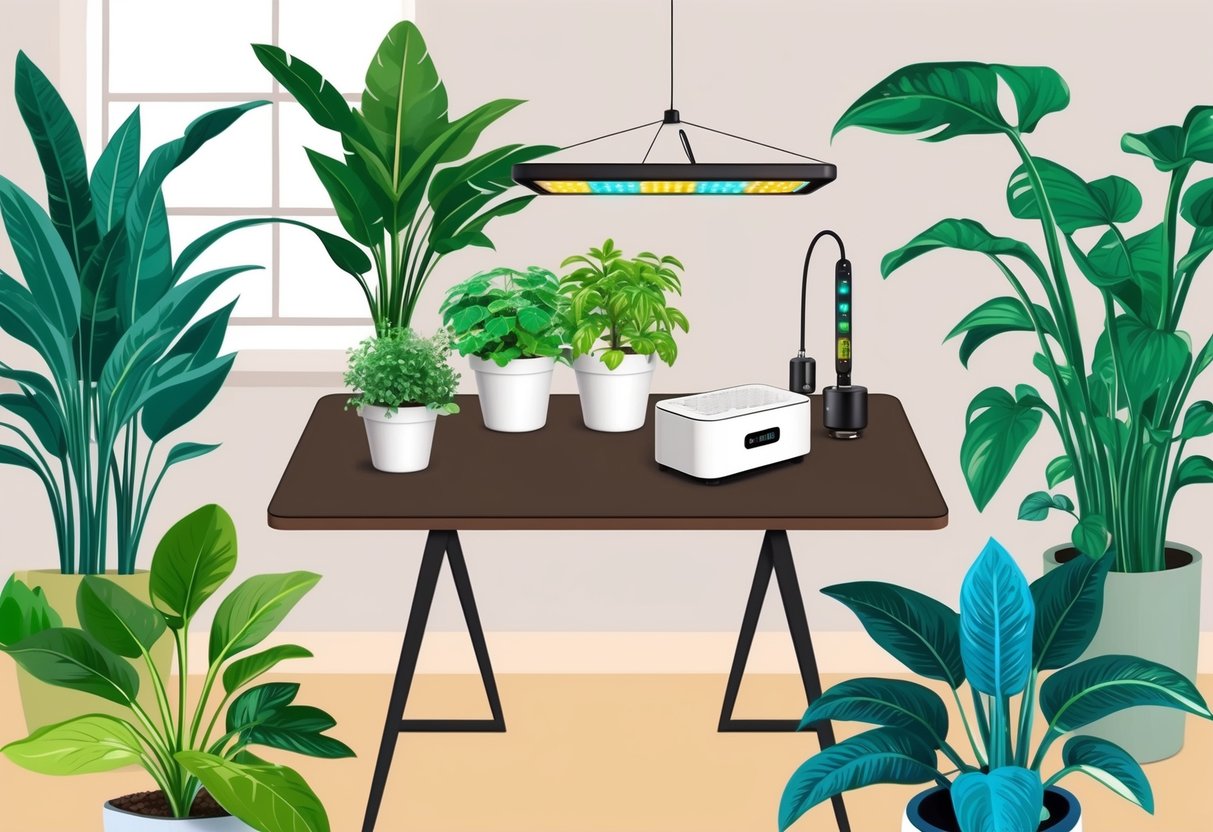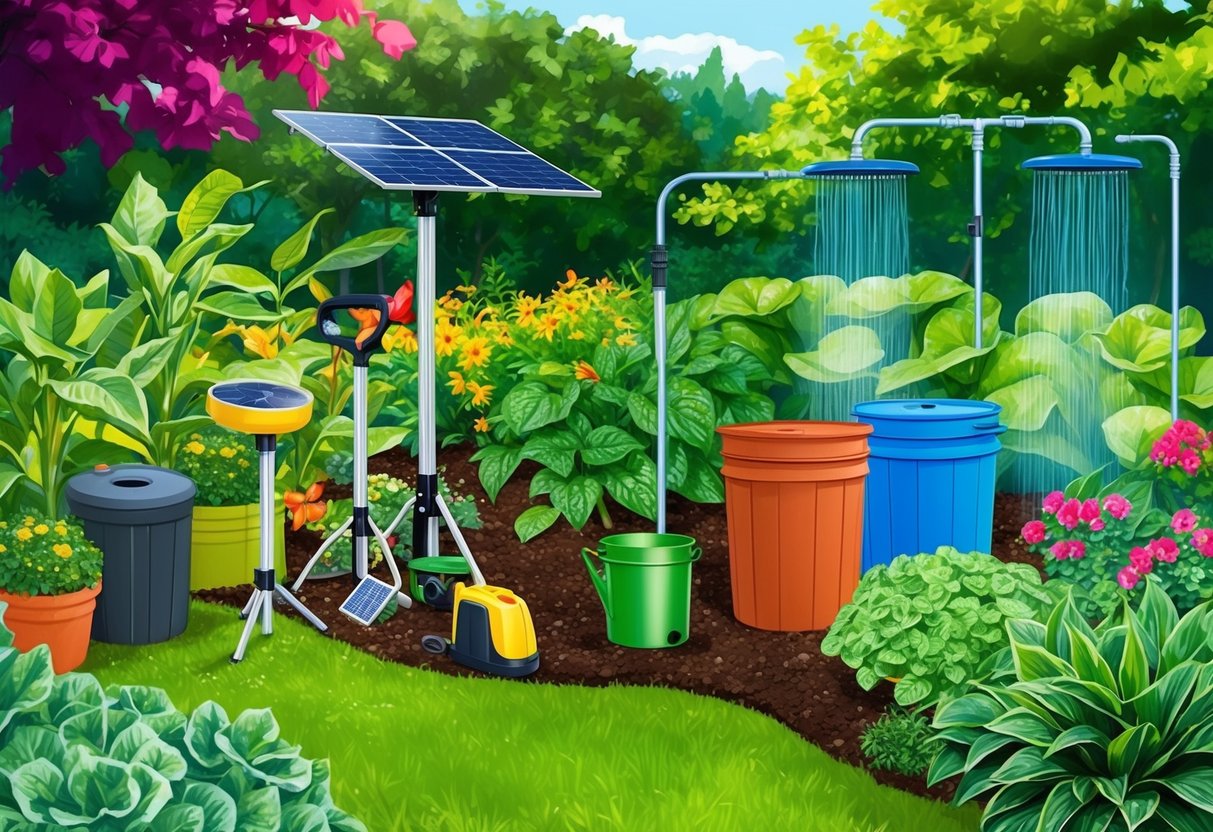
Mobile App Integration
Smart monitoring devices increasingly feature mobile app integration, allowing users to receive instant notifications and track plant health remotely. With mobile apps, data from various sensors—such as soil moisture, temperature, humidity, and even light intensity—are consolidated in an easy-to-understand dashboard.
Users can set custom alerts for thresholds such as low moisture or abnormal pH, ensuring timely action. Many platforms offer historical tracking and trend analysis, supporting data-driven adjustments for optimal plant growth.
Advanced solutions include garden management apps that integrate seamlessly with smart irrigation systems and plant sensors. This connected ecosystem streamlines routine maintenance tasks and improves efficiency for both small and large gardens.
For tech-savvy users, a mobile-based approach offers a comprehensive, real-time view of all plant care activities, making precise, data-backed decisions easier than ever.
Smart Solutions for Specific Plants

Automated gardening tools offer significant advantages for troubleshooting plant-specific issues and supporting consistent growth. Sensors, app integrations, and machine learning features help optimize care for demanding culinary herbs.
Growing Mint with Automation
Mint thrives in moist, well-drained soil but can suffer from irregular watering and overcrowding. Smart pots with integrated soil moisture sensors and auto-watering can keep hydration levels optimal, reducing the risk of wilt or root rot.
Some devices customize watering frequencies based on live moisture readings, ensuring that mint roots are never waterlogged. Lighting is another critical factor for healthy mint foliage.
Adjustable LED lights, found in modern smart gardens, allow growers to provide the exact spectrum and intensity mint plants need for lush, vigorous growth. Temperature and humidity controls further refine the growing environment.
Convenient features such as growth tracking and app-based reminders help gardeners harvest mint at the right stage. Some systems offer insights into fertilization cycles and monitor for pests and diseases.
The combination of these AI-driven gardening tools reduces hands-on maintenance while delivering consistently healthy mint leaves.
Thai Basil Cultivation Made Easy
Thai basil requires warm temperatures, consistent sunlight, and evenly moist soil. Smart garden solutions automate these conditions with climate control, precise irrigation, and full-spectrum lighting.
Built-in sensors track plant health, sending alerts if water or nutrient levels drop outside ideal ranges. Home hydroponic systems make Thai basil cultivation straightforward for beginners and experienced gardeners alike.
These systems deliver nutrients directly to the roots, minimizing guesswork and maximizing growth. Many smart platforms integrate real-time monitoring and smartphone connectivity, allowing users to adjust light schedules or watering remotely.
By leveraging automated gardening gadgets, users can enjoy fresh Thai basil with minimal effort. Automated reminders for pruning, fertilization, and harvesting optimize flavor and yield, making fresh Thai basil consistently available for culinary use.
Eco-Friendly and Energy-Efficient Gardening Tools

Eco-friendly and power-saving garden tools reduce environmental impacts while helping users maintain healthy plants with less waste. These tools use sustainable materials and limit energy consumption, making gardening both practical and responsible.
Sustainable Materials and Design
Smart gardening tools made with recycled steel, biodegradable plastics, and sustainably-sourced wood have a lower carbon footprint compared to conventional garden equipment. Look for pruners, trowels, or cultivators with handles made from bamboo or FSC-certified hardwoods, as these are durable and often replace virgin plastic with greener alternatives.
Manufacturers are now focusing on modular designs, allowing broken parts to be replaced instead of sending the entire tool to landfills. Eco-friendly brands create garden tool sets that last longer and use packaging made from recycled materials for further sustainability gains.
For suggestions on environmentally sound tools, visit this curated list of eco-friendly garden tools and supplies.
Energy Efficiency in Smart Systems
Energy efficiency is a core feature of modern smart gardening tools. Cordless electric tools rely on lightweight lithium-ion batteries, making them quieter, lighter, and free from the emissions associated with gas-powered models.
Devices like smart irrigation controllers and solar-powered sensors optimize water use and electricity, cutting utility costs and reducing unnecessary waste. The best battery-operated and solar-driven smart garden tools operate with minimal standby power.
These systems are often designed to maximize charge and run times, using energy only when data or action is needed. For innovations in efficient battery-powered garden systems, see these cordless garden tool options.